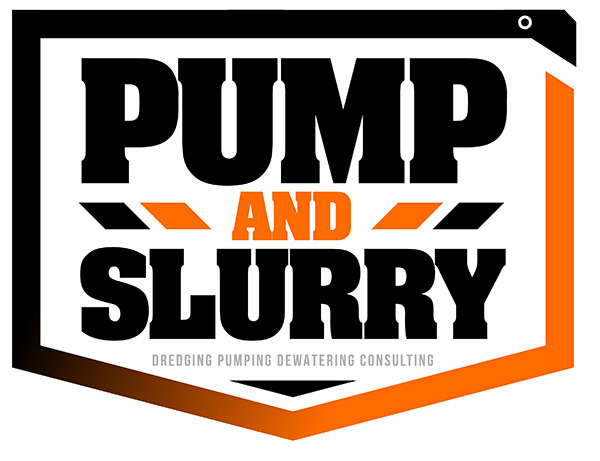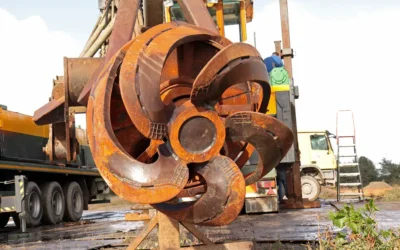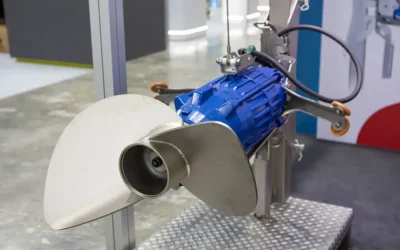Introduction
Dredging plays a crucial role in infrastructure, environmental restoration, mining, and construction industries. Whether you’re maintaining navigable waterways, mining minerals from tailings ponds, or reclaiming land from coastal areas, choosing the right equipment is critical to the project’s success.
The two primary types of dredging equipment are often considered are the submersible dredge pump and the cutter suction dredger. Each comes with its unique advantages and limitations, depending on the dredging site, material characteristics, and operational scale.
This comprehensive guide will help you understand the strengths and weaknesses of each type, offering clarity on when to deploy a submersible dredge pump and when a cutter suction dredger may be the more appropriate choice. As dredge pumps evolve to meet modern demands, selecting the right type ensures maximum efficiency, cost-effectiveness, and environmental compliance.
What Is a Submersible Dredge Pump?
A submersible dredge pump is a specialized type of dredging equipment designed to operate completely underwater. Unlike traditional surface-mounted dredge pumps, which depend on suction from above the waterline, submersible pumps are placed directly into the material being dredged. This configuration allows for far greater efficiency when handling heavy slurries, sediment-laden water, and abrasive materials, making them indispensable in modern dredging operations across a range of industries.
The core function of a submersible dredge pump is to excavate and transport a mixture of solids and fluids from the bottom of a water body, basin, or pit to a discharge point. These pumps are typically used in environments where access is limited or where traditional suction-based systems would fail due to cavitation or lack of suction lift.
Key Components of a Submersible Dredge Pump
A well-designed submersible dredge pump comprises several essential components that work in harmony to provide reliable performance under demanding conditions:
- Electric or Hydraulic Motor: This is the driving force behind the pump. The motor powers the internal components to generate flow and pressure. For locations with limited electrical access or explosive environments, the hydraulic submersible dredge pump is often the preferred choice due to its superior safety and flexibility.
- Impeller: A high-torque impeller rotates to create centrifugal force, which drives the sediment and water mixture through the pump and into the discharge hose or pipe. The impeller design is optimized to resist wear and maintain flow rates even with high solids content.
- Casing: The pump housing protects the internal components and is constructed from abrasion-resistant materials such as high-chrome alloy or stainless steel, ensuring long service life even in aggressive environments.
- Agitators or Cutters (Optional): Some submersible dredge pump comes equipped with mechanical agitators or rotating cutter heads. These attachments help loosen compacted sediment or clay, increasing material uptake and preventing clogging.
Hydraulic Submersible Dredge Pump for Heavy-Duty Applications
The hydraulic submersible dredge pump is a variant that uses hydraulic fluid pressure, usually powered by a remote hydraulic power pack, to operate underwater. This design is particularly advantageous in mining, construction, and offshore applications where explosive atmospheres or deep excavation prevent the use of electrical components. With no exposed electrical wiring and a high-torque output, these pumps can handle denser material mixtures and provide unmatched performance in challenging environments.
Common Applications
Submersible dredge pump are used across multiple industries due to their reliability, versatility, and ability to work in confined spaces. Typical applications include:
- Mining Tailings Ponds: Recovering valuable minerals or cleaning up residual slurry.
- Slurry and Settling Ponds: Transferring thick, high-density sludge for dewatering or processing.
- Industrial Lagoons: Removing industrial waste or sediment build-up.
- Docks and Marinas: Maintaining navigable depths by removing silt and debris.
- Wastewater Treatment Plants: Cleaning basins, digesters, and sludge tanks.
- Tank and Reservoir Cleaning: Accessing confined or deep containers without dismantling infrastructure.
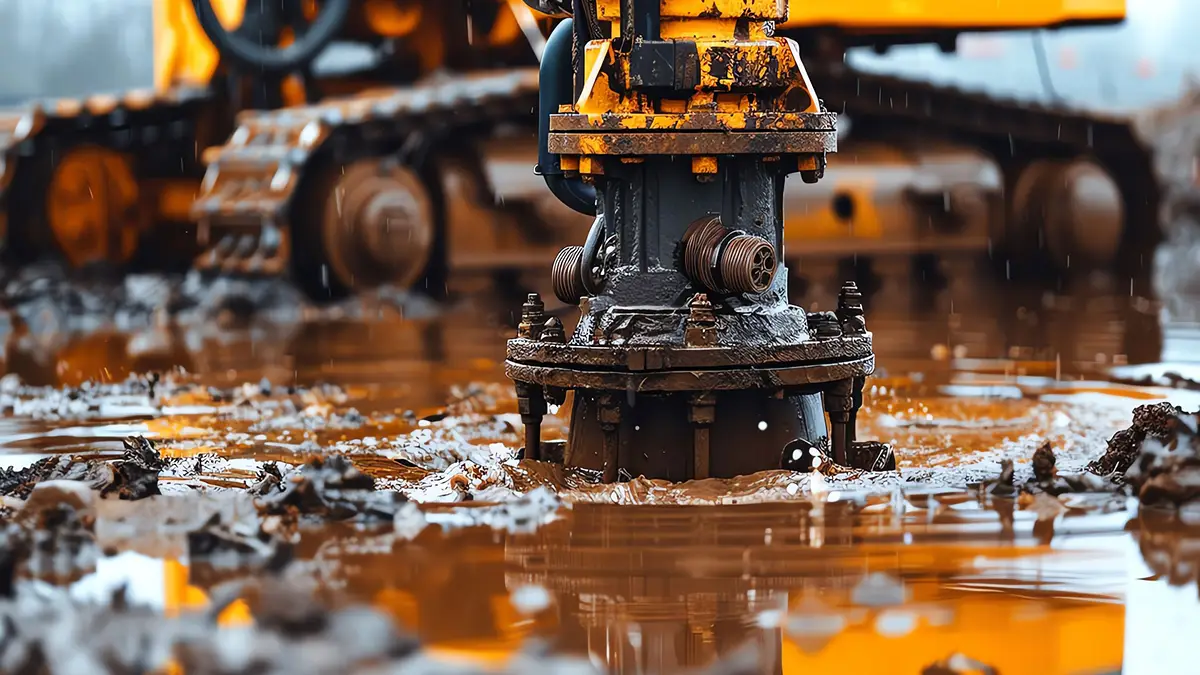
Advantages of Submersible Dredge Pump
One of the most significant advantages of using a submersible dredge pump is its ability to handle high concentrations of solids with minimal downtime. Since the pump operates directly in the slurry, it avoids common suction issues such as cavitation and air locking. This design also eliminates the need for lengthy suction lines, reducing friction losses and energy consumption.
Moreover, these dredge pumps are compact, portable, and easy to deploy from cranes, excavators, barges, or pontoons, making them ideal for both emergency response and routine operations. Whether you’re dredging a remote mining pit or cleaning an industrial tank, the submersible dredge pump offers unmatched efficiency, safety, and cost-effectiveness.
What Is a Cutter Suction Dredger?
A cutter suction dredger (CSD) is a powerful and versatile floating dredging vessel designed to excavate and transport large volumes of underwater sediment and soil. It is commonly used in large-scale dredging operations where substantial quantities of material need to be removed over wide areas or long distances. The defining characteristic of a cutter suction dredger is its rotating cutter head, which mechanically breaks up compacted material like clay, gravel, or rock before the mixture is suctioned through a pipeline using onboard dredge pumps.
The cutter head is mounted on a long suction arm called the ladder. Once the material is loosened, it is sucked up and conveyed through a discharge pipeline that can lead to a designated disposal area, containment basin, or land reclamation site. This method ensures efficient, continuous dredging with high precision and throughput.
Main Features of a Cutter Suction Dredger
Modern CSDs incorporate several advanced systems to optimize dredging operations across various aquatic environments:
- Rotary Cutter Head: Designed to cut through hard-packed or cohesive materials, the cutter head rotates at high speeds to break apart sediment on the seabed, making it easier to pump.
- Suction Pipeline: Connected directly to the cutter head, the pipeline draws the loosened material into the hull’s dredge pumps.
- Discharge Pipeline: Floating or land-based pipelines transport the dredged material to the dumping area or for reclamation purposes.
- Hydraulic Systems and Winches: These are used for lowering the cutter arm and for precise positioning of the vessel using spuds and anchors.
- Diesel Power Unit: Most CSDs are diesel-powered, offering the energy needed to run large dredge pumps, cutter heads, and hydraulic systems over extended dredging missions.
Common Applications of Cutter Suction Dredgers
Cutter suction dredgers are favored for major infrastructure and marine development projects due to their efficiency and high productivity. Typical applications include:
- Riverbed and Canal Maintenance: Clearing silt and debris for better water flow and flood management.
- Land Reclamation Projects: Pumping sediment to create new land from the sea or riverbeds.
- Coastal Protection: Building up beaches or shorelines by relocating sand or sediment.
- Offshore Projects: Supporting energy infrastructure development, like laying pipelines or preparing platforms.
These dredgers are particularly effective when large volumes of material need to be relocated quickly and over distances that smaller systems—like the submersible dredge pump—may struggle to match.
Limitations and Considerations
While the cutter suction dredger offers immense dredging power, it also comes with certain constraints. Its large size and fixed operation method make it less suited for small, confined, or shallow environments. Deployment requires logistical planning, trained crew, support vessels, and anchor systems for stability and maneuvering.
In contrast, a submersible dredge pump offers much more flexibility in tighter spaces. For instance, while a CSD excels in a harbor expansion project, a hydraulic submersible dredge pump might be better suited for mining tailings ponds or industrial lagoons where mobility and access are limited.
Moreover, the operational costs associated with CSDs—including fuel, maintenance, transportation, and labor—are significantly higher. Thus, while they are unmatched in scale and performance, cutter suction dredgers are most effective when the scale and project duration justify the investment.
In summary, cutter suction dredgers represent the heavy-duty side of the dredging spectrum, capable of performing high-volume sediment removal in open waters. However, for niche, smaller-scale, or constrained-site operations, modern dredge pumps, especially the submersible dredge pump, may offer a more efficient and adaptable alternative.
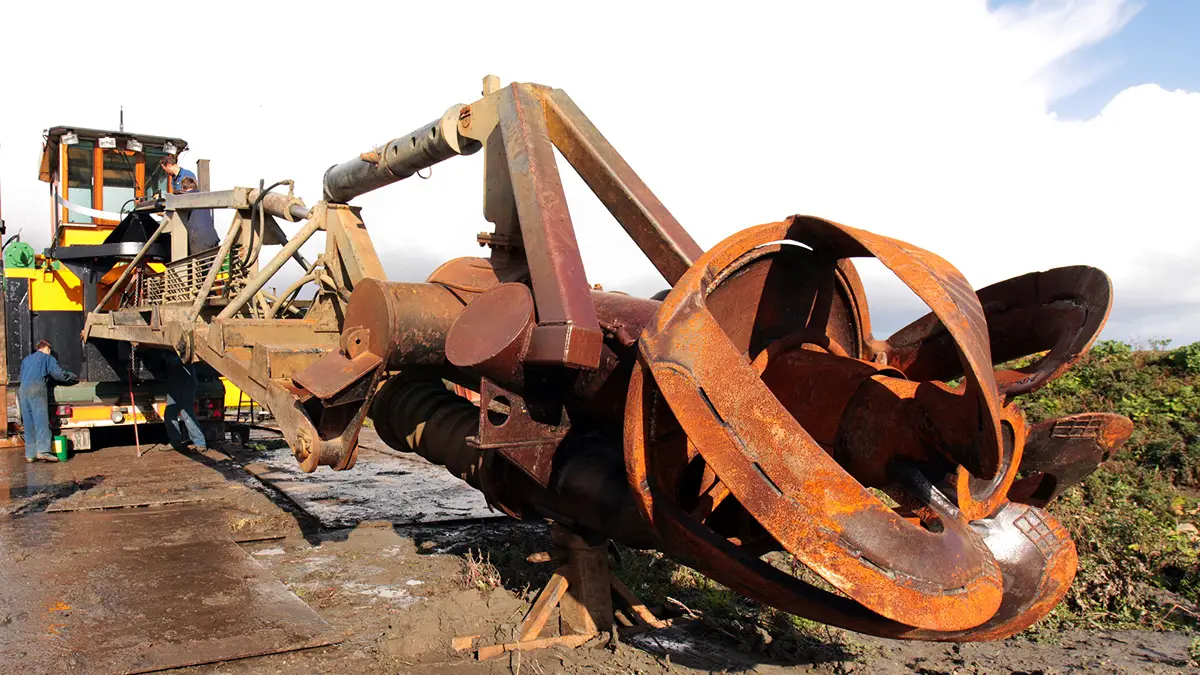
Key Differences Between Submersible Dredge Pump and Cutter Suction Dredgers
Choosing between a submersible dredge pump and a cutter suction dredger depends on several technical and logistical considerations.
1. Mobility and Deployment
Submersible dredge pump is compact and highly mobile. They can be suspended from cranes, attached to excavators, or mounted on floating platforms. This flexibility makes them perfect for difficult-to-access locations such as remote mines, narrow channels, or industrial tanks.
On the other hand, cutter suction dredgers are large vessels requiring navigable waters, anchoring systems, and considerable space to operate. While they offer higher output, they’re less agile.
2. Power and Throughput
CSDs typically offer greater throughput. Their large onboard dredge pumps and mechanical cutter heads enable them to process massive volumes of sediment per hour. They’re ideal for continuous, large-scale operations such as port construction or coastal reclamation.
However, modern submersible dredge pump technology has narrowed this gap. The latest models, especially hydraulic submersible dredge pump variants, can move high-density slurries efficiently in smaller projects.
3. Operational Cost and Complexity
Submersible dredge pump is more affordable to deploy and maintain. With minimal crew requirements, quick setup, and modular construction, they keep project overheads low.
CSDs are capital-intensive. Their fuel consumption, maintenance needs, crew wages, and transportation add substantial costs, making them viable only for large-scale projects.
4. Environmental Considerations
In sensitive environments, using a submersible dredge pump minimizes ecological disruption. Since it operates below water without the need for extensive anchoring or sediment dispersion, it causes less turbidity.
CSDs can stir up large volumes of sediment, impacting aquatic ecosystems. They also require permitting and extensive environmental assessments in protected zones.
5. Site Conditions
For shallow or hard-to-access locations, a submersible dredge pump offers unmatched convenience. Whether deployed vertically into a tank or diagonally in a narrow trench, it adjusts to tight spaces.
CSDs need maneuverability, channel width, and access to water bodies for mooring and positioning. They’re ideal for open-water projects.
Factors to Consider When Choosing
When deciding between a submersible dredge pump and a cutter suction dredger, consider the following:
1. Project Scale
Small and medium-sized projects are better suited to submersible pumps. Massive infrastructure projects like ports or harbors benefit more from CSDs.
2. Material Composition
Submersible dredge pump handles highly abrasive, high-solid content slurries such as sand, mud, and mining waste. If the material includes large debris or compact clay, a CSD may be more effective with its mechanical cutter.
3. Budget
A submersible dredge pump provides an economical solution, requiring fewer personnel and minimal infrastructure. CSDs, due to their complexity, often demand a higher upfront and operational investment.
4. Duration and Frequency
For short-term or emergency dredging tasks, dredge pumps offer rapid deployment. Cutter dredgers are more appropriate for long-term contracts and continuous dredging cycles.
5. Environmental Permits
Submersible systems are less intrusive and often require fewer environmental clearances compared to CSDs, which can disrupt local habitats significantly.
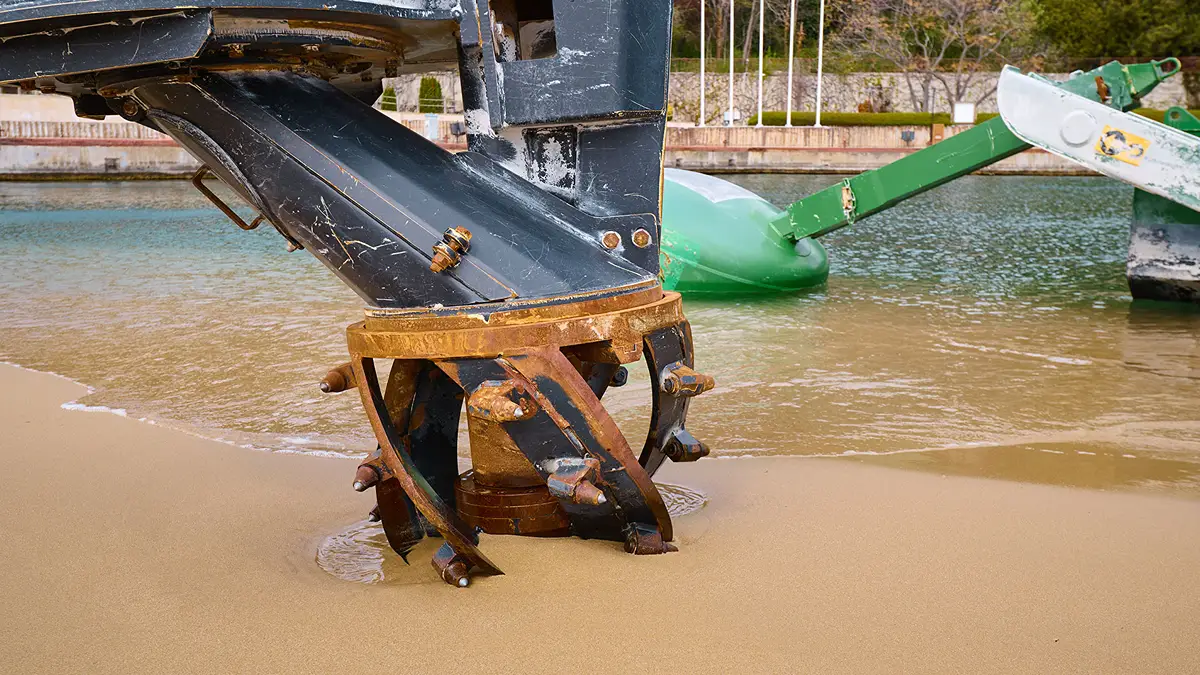
When to Use a Submersible Dredge Pump
A submersible dredge pump is the ideal choice for:
- Mining operations: Removal of tailings, sand, or slurry from pits
- Wastewater treatment: Digging out sludge or industrial byproducts
- Environmental remediation: Cleaning contaminated sediment
- Construction sites: Dewatering and removal of accumulated solids
- Tank and pond cleaning: Without removing the structure
These pumps deliver powerful performance in a small package, capable of reducing project costs while improving material recovery.
For example, a hydraulic submersible dredge pump can be lowered into a silted industrial pond, displacing and transporting the dense sludge to a processing area with ease, all without dismantling infrastructure or requiring a dredging vessel.
When to Use a Cutter Suction Dredger
A cutter suction dredger is your best option when:
- You’re working on a large-scale coastal or river dredging project
- You need to transport massive volumes of material over long distances.
- The material includes hard-packed clay or rock that requires mechanical cutting.
- The site allows for barge access and support vessels.
CSDs shine in structured environments with dedicated resources. For example, in a port expansion project, where 100,000 cubic meters of sediment need to be removal, a CSD can complete the task efficiently and continuously.
Hybrid Approach: Combining Technologies
In some cases, a hybrid approach may offer the best of both worlds. A submersible dredge pump can be integrated into larger cutter suction or bucket dredging systems to handle residual material, dewater tailings, or support precision dredging.
Modern dredge pumps can be mounted on excavators for shore-based work while a CSD manages the primary offshore operation. This reduces downtime and ensures material recovery in challenging areas.
Cost Comparison
Submersible Dredge Pump Costs
- Lower initial cost
- Minimal crew and maintenance
- Reduced energy consumption (especially for electric models)
- Quick deployment and dismantling
Cutter Suction Dredger Costs
- High capital investment
- Crew salaries and housing
- Fuel, anchor, mooring, and maintenance expenses
- Requires a barge and support systems
Unless you’re committed to a massive, long-term project, a submersible dredge pump typically delivers superior ROI in smaller or mid-size operations.
Conclusion: Which One Is Right for You?
Choosing the right dredging equipment depends entirely on your project’s scope, site conditions, material type, and budget. The submersible dredge pump stands out for its compact design and ease of deployment, making it ideal for projects in confined or remote areas. It offers superior versatility, energy efficiency, and a lower environmental impact, especially when working in mining operations, industrial tanks, lagoons, and dewatering applications. The hydraulic submersible dredge pump, in particular, delivers exceptional performance in submerged or hazardous industrial environments where electrical systems are impractical or unsafe.
On the other hand, cutter suction dredgers are the go-to solution for large-scale sediment removal tasks, especially when dealing with compacted clay, gravel, or rock. They excel in coastal engineering, deep-water dredging, port deepening, and land reclamation projects where vast volumes of material must be excavated and transported over long distances. While more complex and cost-intensive, their high output and precision make them indispensable for massive infrastructure development.
Each system plays a vital role in the global dredging landscape. While the submersible dredge pump offers flexibility and ease of use, the cutter suction dredger brings unmatched power and volume handling capabilities. When in doubt, it’s best to consult a dredging engineer or contractor who can assess your specific site conditions and operational needs to recommend whether a submersible dredge pump, a cutter suction dredger, or even a combination of both is the most effective solution for your dredging project.




